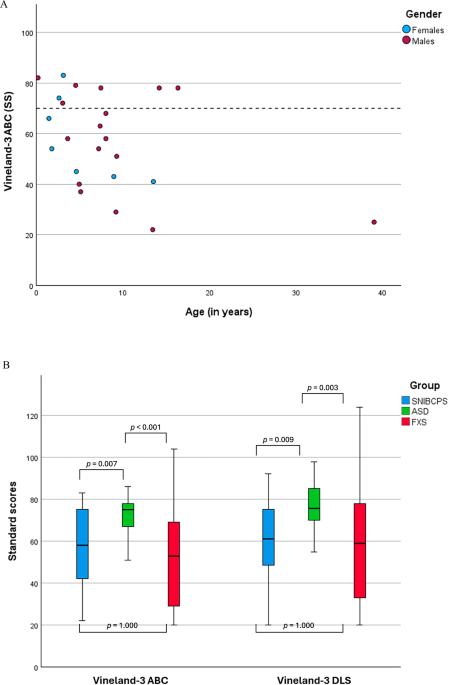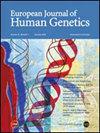Neurobehavioral profile of individuals with pathogenic variants in CHD3
IF 4.6
2区 生物学
Q2 BIOCHEMISTRY & MOLECULAR BIOLOGY
引用次数: 0
Abstract
Snijders Blok-Campeau syndrome (SNIBCPS), a neurodevelopmental disorder first described in 2018, is caused by heterozygous pathogenic variants in CHD3. Its encoded protein plays a crucial role in the development of the nervous system of embryos. While phenotypic traits have been broadly defined, i.e., global neurodevelopmental delays such as intellectual disabilities and delayed speech acquisition, and physical features such as characteristic facial features and macrocephaly, the phenotypic spectrum has not been further assessed. We present the neurobehavioral profile of 38 individuals with variants in CHD3 and compare it to the ones of autism spectrum disorder (ASD) and Fragile X syndrome (FXS) cohorts. Profound clinical deficits were found in adaptive functioning, communication skills, and sensorimotor functioning in most SNIBCPS participants. Similarities between FXS and SNIBCPS cohorts were unveiled, characterized by diminished levels of global adaptive behavior and adaptive functioning in the social and communication domains. Nevertheless, despite profound challenges in global adaptive behavior in SNIBCPS, we reveal the social domain as showing the highest adaptive levels alongside minimal emotional/behavioral issues within the sample, suggesting relative strengths inherent to SNIBCPS. This study enriches the scarce SNIBCPS literature by delineating the neurobehavioral phenotypic spectrum of SNIBCPS and by innovating comparisons with clinically akin neurodevelopmental disorders.

CHD3致病性变异个体的神经行为特征。
Snijders block - campeau综合征(SNIBCPS)是一种神经发育障碍,于2018年首次被描述,由CHD3的杂合致病性变异引起。其编码的蛋白质在胚胎神经系统的发育中起着至关重要的作用。虽然表型特征已被广泛定义,如智力残疾和语言习得延迟等整体神经发育迟缓,以及面部特征和大头畸形等身体特征,但表型谱尚未得到进一步评估。我们介绍了38名CHD3变异个体的神经行为特征,并将其与自闭症谱系障碍(ASD)和脆性X染色体综合征(FXS)队列进行了比较。大多数SNIBCPS参与者在适应功能、沟通技巧和感觉运动功能方面存在严重的临床缺陷。FXS和SNIBCPS的相似性被揭示出来,其特征是在社会和沟通领域的整体适应行为和适应功能水平降低。然而,尽管SNIBCPS的整体适应行为面临着深刻的挑战,但我们发现,在样本中,社会领域显示出最高的适应水平和最小的情绪/行为问题,这表明SNIBCPS固有的相对优势。本研究通过描述SNIBCPS的神经行为表型谱,并通过与临床类似神经发育障碍的创新比较,丰富了稀缺的SNIBCPS文献。
本文章由计算机程序翻译,如有差异,请以英文原文为准。
求助全文
约1分钟内获得全文
求助全文
来源期刊

European Journal of Human Genetics
生物-生化与分子生物学
CiteScore
9.90
自引率
5.80%
发文量
216
审稿时长
2 months
期刊介绍:
The European Journal of Human Genetics is the official journal of the European Society of Human Genetics, publishing high-quality, original research papers, short reports and reviews in the rapidly expanding field of human genetics and genomics. It covers molecular, clinical and cytogenetics, interfacing between advanced biomedical research and the clinician, and bridging the great diversity of facilities, resources and viewpoints in the genetics community.
Key areas include:
-Monogenic and multifactorial disorders
-Development and malformation
-Hereditary cancer
-Medical Genomics
-Gene mapping and functional studies
-Genotype-phenotype correlations
-Genetic variation and genome diversity
-Statistical and computational genetics
-Bioinformatics
-Advances in diagnostics
-Therapy and prevention
-Animal models
-Genetic services
-Community genetics
 求助内容:
求助内容: 应助结果提醒方式:
应助结果提醒方式:


